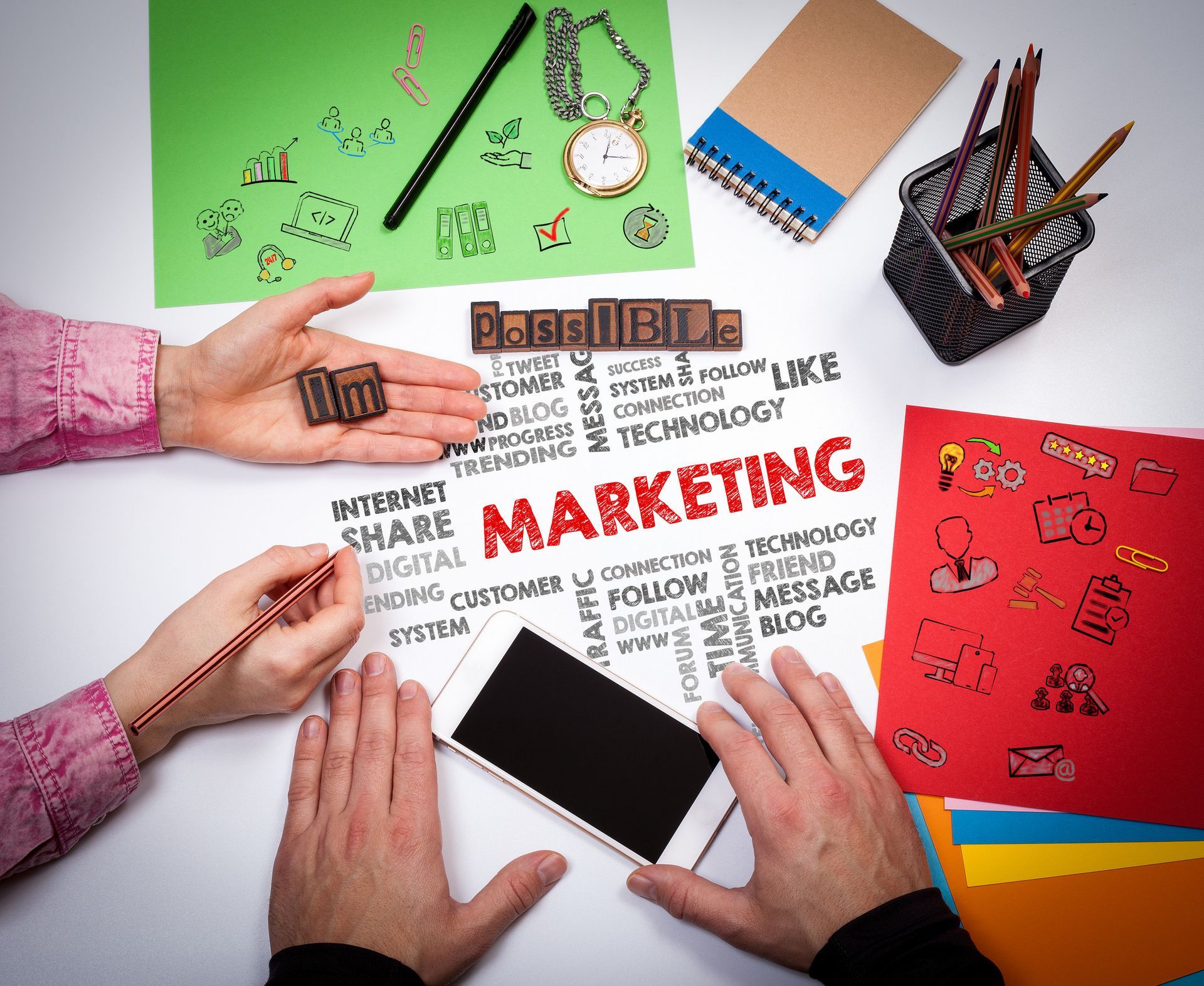Navigating the Future: Top Marketing Trends to Watch in 2025
The marketing landscape is never static. Technologies evolve, consumer behaviors shift, and trends emerge that redefine how businesses connect with their audiences. For companies looking to stay competitive in 2025, adopting these trends won't just be an option; it will be a necessity.
This guide explores the top marketing trends expected to dominate the coming year and their practical applications across industries. We'll also share insights to help your business stay ahead of the curve.
The Rise of AI-Powered Personalization
What to Expect
Artificial intelligence (AI) continues to revolutionize marketing strategies, with hyper-personalization being a critical focus. AI enables marketers to analyze vast amounts of data to deliver highly tailored experiences for customers, from product recommendations to dynamic content creation.
How Businesses Can Adapt
- Leverage AI Writing Tools like Outwrite or Jasper for personalized email campaigns that resonate individually with your audience.
- Use predictive analytics to identify customer preferences, creating real-time tailored offerings across multiple platforms.
- Implement AI chatbots for 24/7 customer assistance, ensuring a seamless, personalized experience.
Example in Action
Netflix remains a prime example, leveraging AI to analyze viewing habits and deliver personalized recommendations, fostering consistent engagement with users.
Voice Search Optimization
What to Expect
As smart speakers like Amazon Alexa and Google Nest become household staples, voice search adoption is skyrocketing. By 2025, nearly 55% of
households globally are projected to own at least one smart speaker, meaning businesses must prioritize voice search optimization.
How Businesses Can Adapt
- Focus on long-tail keywords and natural language phrases to align with how people speak during voice searches.
- Optimize content to directly answer "who," "what," "where," and "how" questions clearly and concisely.
- Invest in structured data markup to enhance visibility in voice search results.
Example in Action
A local coffee shop optimized its website with location-specific keywords used in voice search (e.g., "Where can I find espresso near me?"), leading to a
30% increase in foot traffic.
The Era of Short-Form Video Content
What to Expect
TikTok's explosive growth and Instagram Reels' continued domination prove one thing: short-form video is here to stay. This snackable, engaging format captures attention quickly, ensuring brands remain top-of-mind in the crowded digital marketing world.
How Businesses Can Adapt
- Prioritize creating 15- to 30-second videos that highlight compelling storytelling or valuable tips.
- Diversify your video formats with tutorials, customer testimonials, behind-the-scenes footage, and promotional deals.
- Use high-quality visuals to maintain a polished brand image, even in short clips.
Example in Action
The skincare brand Glow Up used Reels to post 30-second DIY self-care hacks featuring their products. Within weeks, engagement soared by 60%, and their audience grew organically.
Sustainability Marketing is Essential, Not Optional
What to Expect
Consumers are no longer just appreciating sustainability; they’re demanding it. By 2025, 72% of customers are expected to consider sustainability when making purchasing decisions.
How Businesses Can Adapt
- Highlight your eco-friendly practices, such as reducing plastic usage, committing to ethical sourcing, or achieving carbon neutrality.
- Use transparent storytelling to outline your sustainability goals and progress.
- Back claims with third-party certifications like Fair Trade or Certified Organic.
Example in Action
Patagonia has long been a leader in sustainability marketing. Its "Don't Buy This Jacket" campaign encouraged customers to recycle or repair items, enhancing its brand ethos while building loyalty among environmentally conscious consumers.
Growth of Interactive and Immersive Marketing
What to Expect
With advancements in augmented reality (AR), virtual reality (VR), and 3D technology, interactive marketing will deliver unforgettable customer experiences. Virtual try-ons, AR-powered product visuals, and interactive storytelling will become the norm for forward-thinking brands.
How Businesses Can Adapt
- Add AR features to your e-commerce website, letting customers "try on" products or visualize them in their space.
- Host exciting immersive virtual events through VR platforms to engage global audiences.
- Use interactive quizzes or polls as part of your social media strategy to boost engagement.
Example in Action
IKEA allows customers to virtually place furniture in their homes via the IKEA Place AR app, eliminating uncertainty and enhancing confidence in online purchases.
Privacy-First Marketing
What to Expect
With the phase-out of third-party cookies and stricter data privacy regulations, businesses must pivot their strategies to comply with these changes while maintaining effective advertising practices.
How Businesses Can Adapt
- Invest in first-party data collection by fostering direct customer relationships via email subscriptions or loyalty programs.
- Build trust through clear, transparent communication about how customer data is collected and used.
- Adopt tools like Google’s Privacy Sandbox to continue delivering targeted ads while respecting user privacy.
Example in Action
Apple's rollout of App Tracking Transparency empowered users to control how their data is shared, and brands that prioritized transparency saw less backlash and greater trust from customers.
Inclusive and Diverse Marketing
What to Expect
Modern consumers value representation and expect brands to reflect diverse communities authentically. Campaigns that promote inclusivity—not just superficially but in a meaningful way—will resonate deeply with diverse audiences.
How Businesses Can Adapt
- Collaborate with diverse creators and influencers who genuinely represent various demographics.
- Ensure your visuals, messaging, and content reflect a wide range of experiences, cultures, and voices.
- Actively support causes and initiatives that align with social responsibility and inclusivity.
Example in Action
Nike’s inclusive marketing campaigns spotlight athletes from underrepresented backgrounds, proving their commitment to diversity through action, not just words.
Actionable Steps to Future-Proof Your Marketing Strategy
By integrating these trends into your 2025 marketing strategy, you'll position your business to thrive in a highly competitive space. Here are a few steps to get started:
- Take inventory of your current practices and identify which trends align with your goals.
- Test new technologies like AR or AI-powered tools incrementally by piloting focused campaigns.
- Build strong relationships with your audience by prioritizing transparency, sustainability, and inclusivity in your branding efforts.
Remember, the future of marketing belongs to businesses that are proactive, adaptive, and genuinely customer-centric.
Looking to take your marketing to the next level?
Elevate 365 Marketing is dedicated to providing top-notch digital marketing services in the USA, designed to keep you ahead of the competition with innovative strategies and the latest tools. Get in touch with us today to learn how we can elevate your brand every day of the year!









